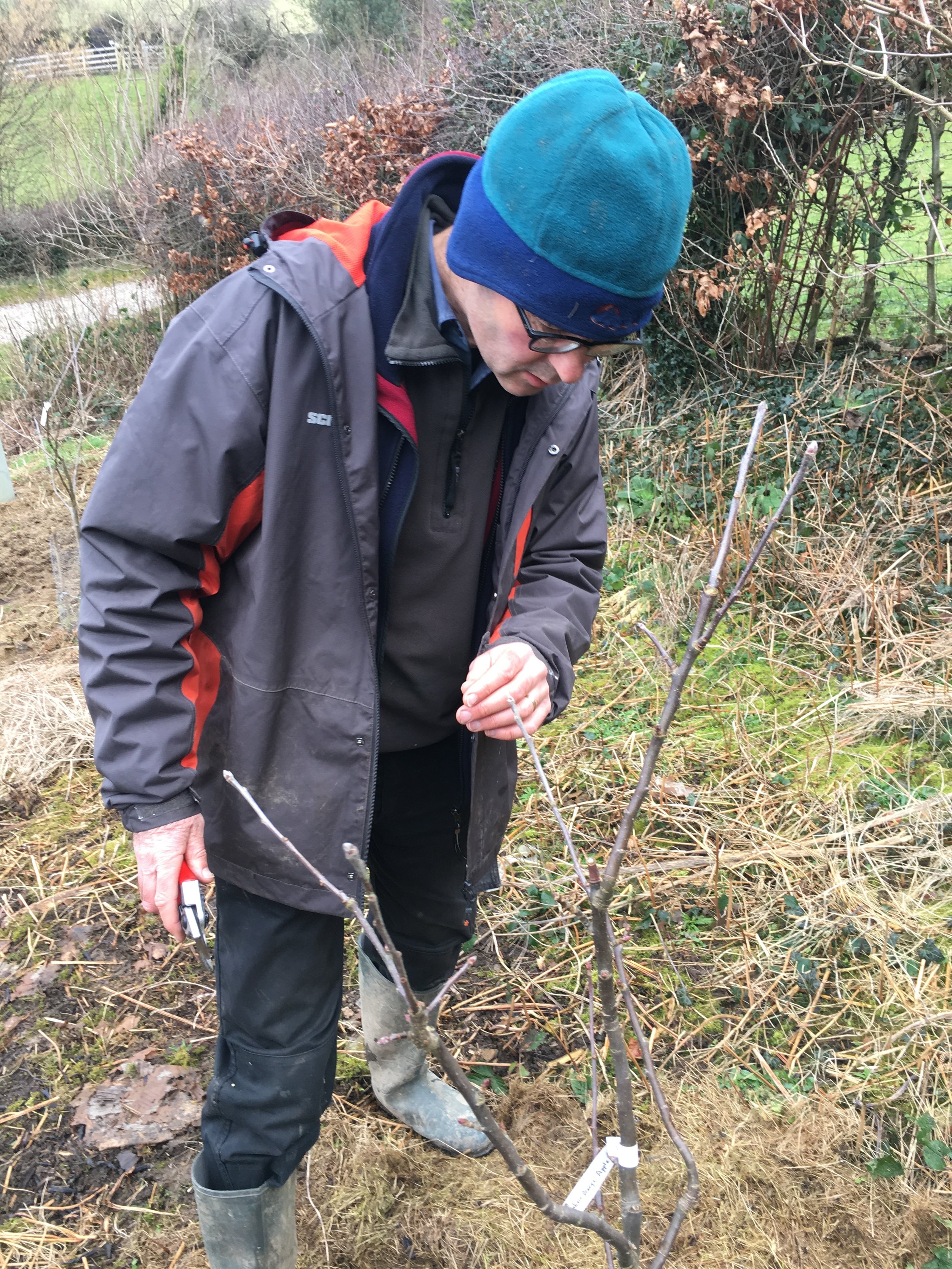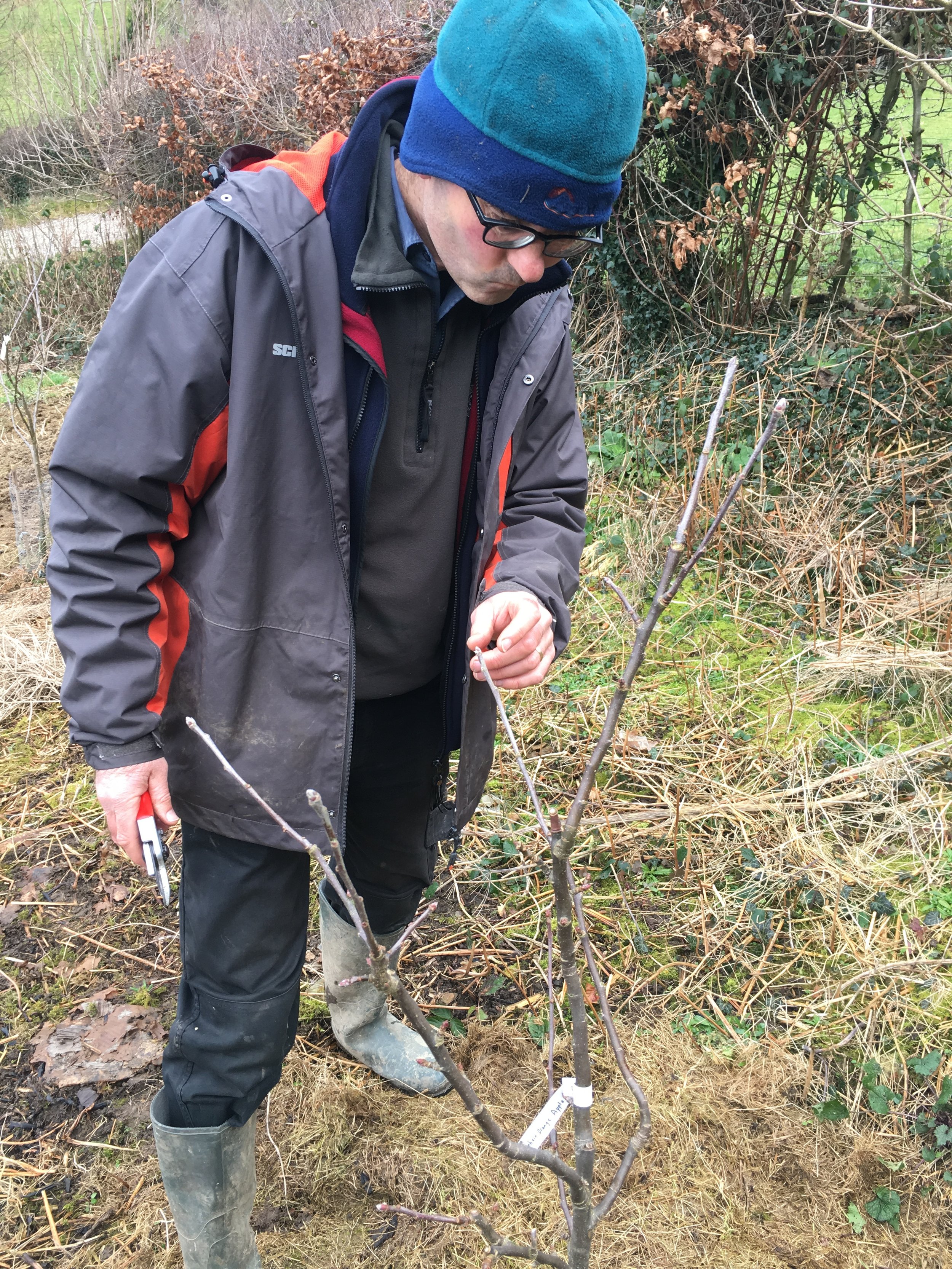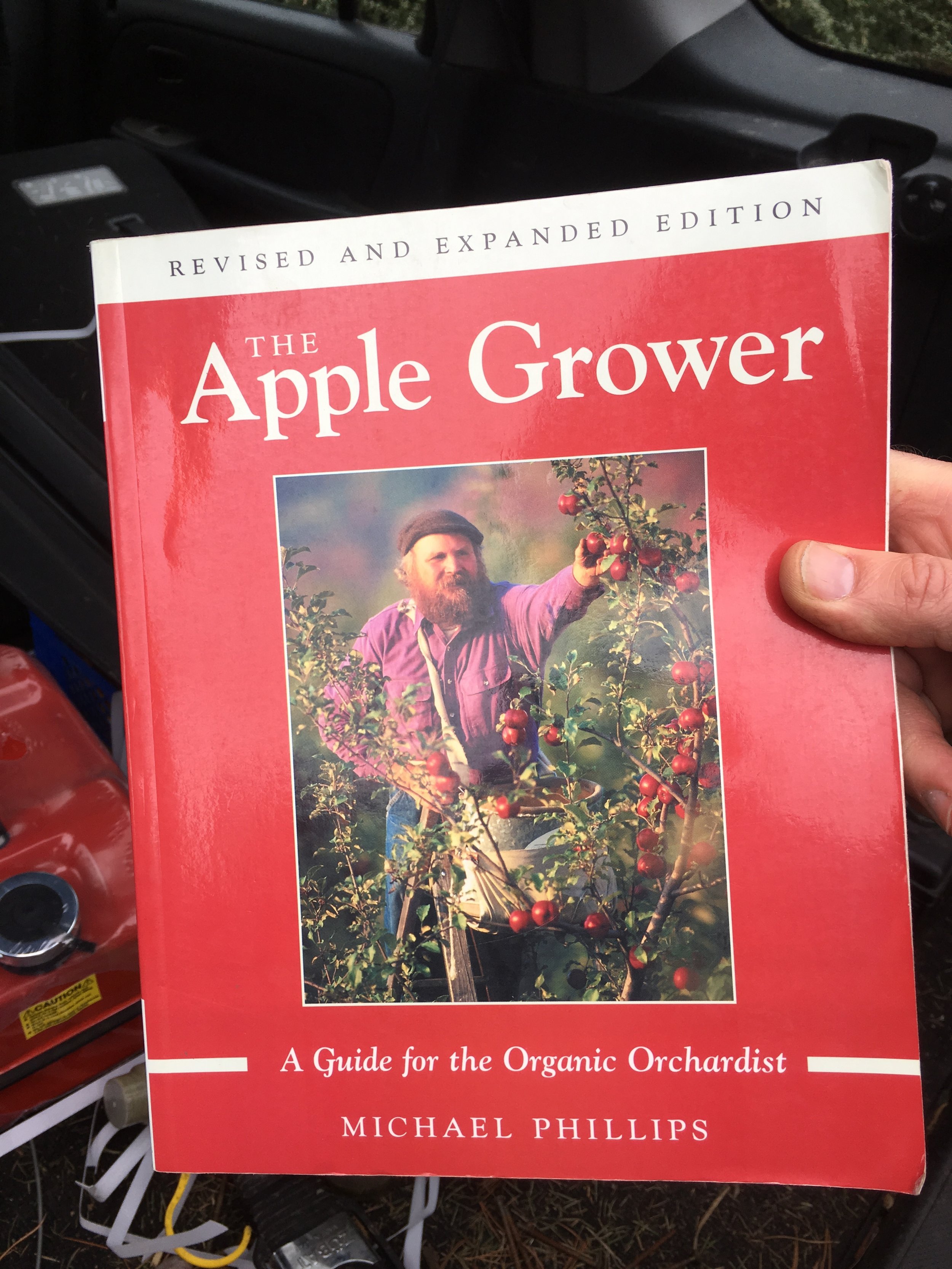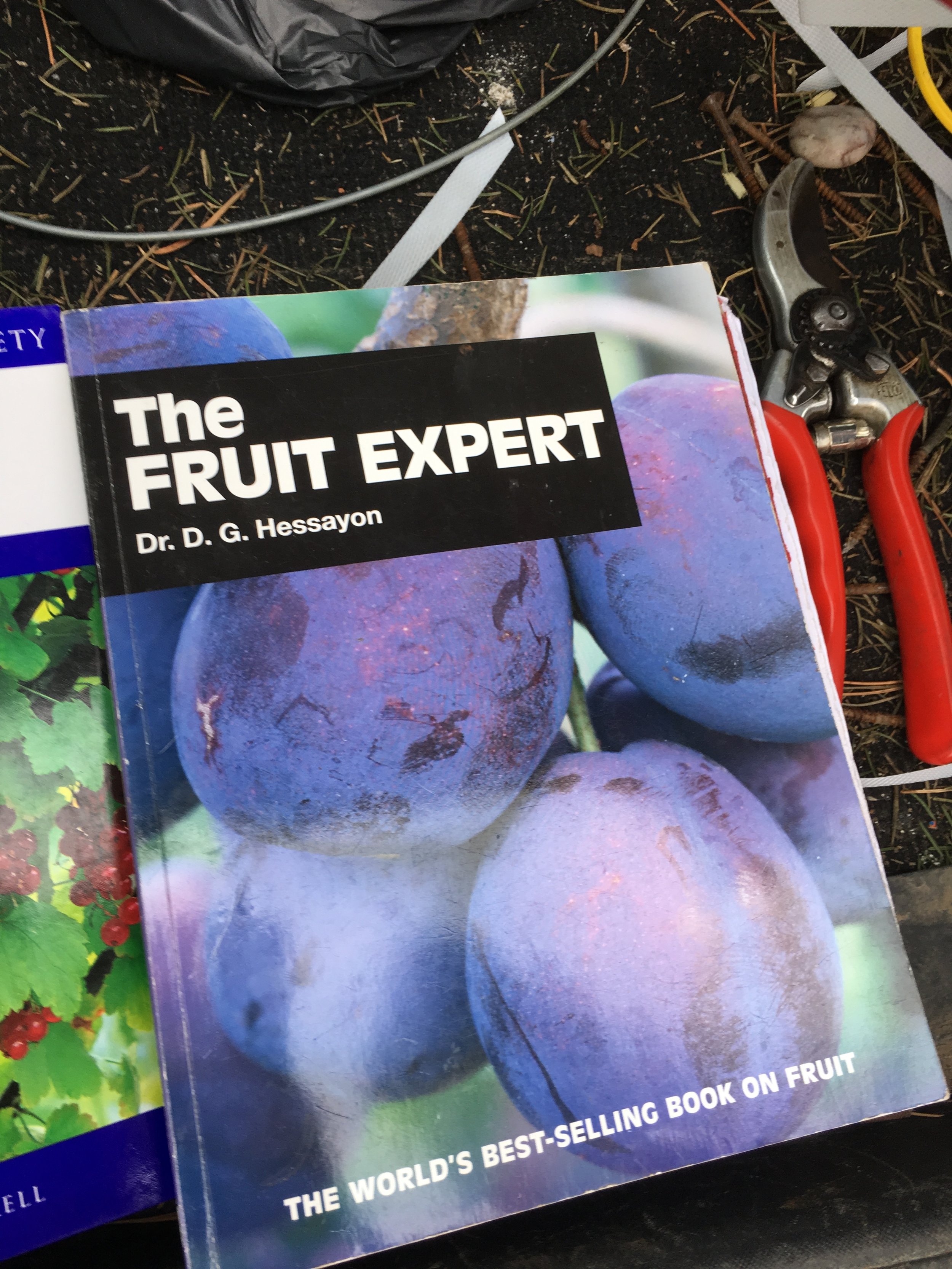An apple tree pruning masterclass in Sheffield
In November 2016 I planted 15 apple trees on our plot bought from Huw Evans of Sheffield Organic Growers. I was lucky to benefit from his advice and experience which he has built from establishing a 300 tree orchard over the last seven years. Yesterday Huw has kind enough to drop by to show me how to carry out the all important formative pruning to ensure the trees develop into productive and healthy trees.
Over the next few years we hope that these trees along with the other soft fruit, salads, herbs and perennial vegetables will contirbute an increasing quantity of supplies into PJ taste.
Huw accessing how to proceed with this Red Windsor apple tree. He selected the four main branches at the top of the tree and cut these back by up to half of last seasons growth to an outward facing bud to encourage these to branch further. The lower branches were cut back to between 4 and 6 buds to encourage them to develop as fruiting spurs.
The trees I planted over the winter of 2016/17 are listed below. I have added descriptions from the Orange Pippin Trees web site
Two Discovery -the definitive early-season English apple variety.
Three Red Windsor - Self-fertile, so there is no need to worry about pollination partners. It grows naturally in a neat and tidy fashion, and crops heavily. The apples can be picked over several weeks so you don't have to deal with a glut. It seems untroubled by the usual diseases of apples, and the blossom also has some resistance to frost.
Two Ribstone Pippin - A particuarly handsome apple, thought to be one of the parents of Cox's Orange Pippin. It has some of the aromatic qualities of that variety when eaten fresh, but is noticeably sharper in flavour - and for this reason is often used in the kitchen as well.
By Victorian times Ribston Pippin was very popular as a late autumn apple, and the Victorian fruit enthusiast Robert Hogg reported that it was in "greatest perfection during November and December".
Two Blemhein Orange - Blenheim Orange is a popular large English heritage apple variety, widely grown in gardens. It has the characteristic orange flush which is often associated with English apples. Although it can be eaten fresh, it is best considered a culinary apple, and it cooks to a stiff puree.
One Rajka - a modern apple variety, developed specifically to be resistant to the main apple diseases, and hence a good choice for the gardener or home orchardist who prefers an organic or un-treated regime. The fruit is deep-red coloured over a golden yellow background when ripe. The flesh is a creamy-yellow colour and is open-textured, fairly crisp but not too hard, and snaps cleanly when you bite into it. The flavour is sweet, but with good acidity.
Two Fiesta - Fiesta is a relatively new English apple, developed in Kent in the 1970s but with a very traditional English style and flavour. Cox's Orange Pippin is one of its parents, and it has inherited the classic Cox aromatic sweet/sharp flavour. Visually it also looks the part, with the attractive orange flush so typical of traditional English apples.Fiesta is one of the best apples for juicing. It produces copious amounts of juice, with a very good rich sweet / sharp flavour.It can also be used as a substitute for Cox's Orange Pippin in apple cookery - slices keep their shape when cooked.
Three Ashmead Kernel - Ashmeads Kernel is a very old traditional English russet apple. It remains popular for its distinctive pear-like flavour which is quite different from most other apple varieties.
Although often considered as a connoisseur's dessert apple, Ashmead's Kernel is actually quite versatile. It can be used for cooking, or sliced in savoury salads, and it keeps very well in a cold store.
The pictures above show Huw deciding how to proceed with the Blenheim Orange. As you can see each tree presents a slightly different challenge depending on how it has grown through the year. These trees are positioned quite close to a hedge and it may be that this has created a slightly lopsided growth pattern. The video below gives some great tips from Huw and shows how he proceeded with this tree.
Huw's advice have given us lots of knowledge about pruning trees of this young age. He also recommended a couple of books which he says he still uses regularly and cover a wide variety of specis and styles of training.
There are a number of growers from whom I would recommend buying quality trees.
In the Sheffield area and for planting in this area you could'nt do better than to approach Huw at Sheffield Organic Growers
For a wide variety of trees and great advice on forest gardens - Martin Crawford at the Agroforestry Research Council
Cool Temperate in Nottingham also stocks an interesting range of trees
Finally here is some information from Wortley Hall Walled garden where they re-established the orchard back in 2007 and have plenty of interesting regional heritage varieties.





